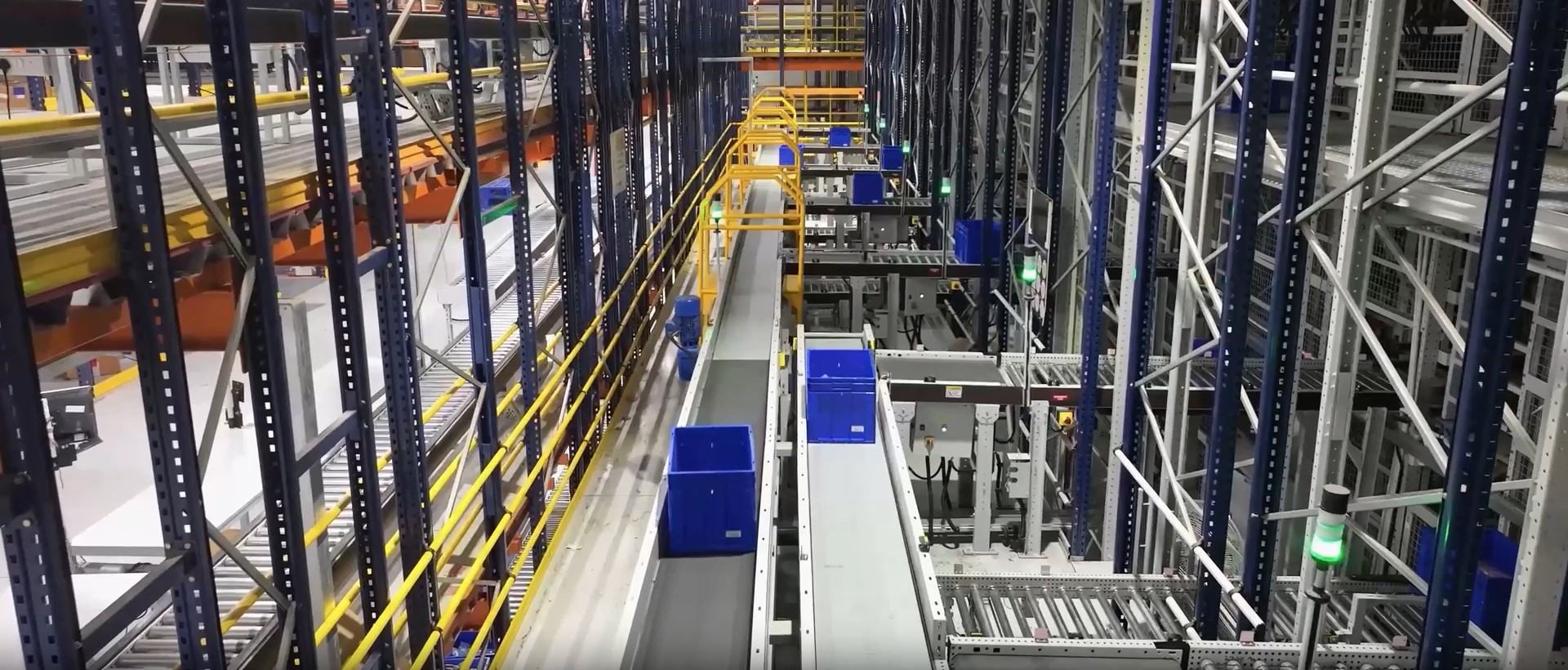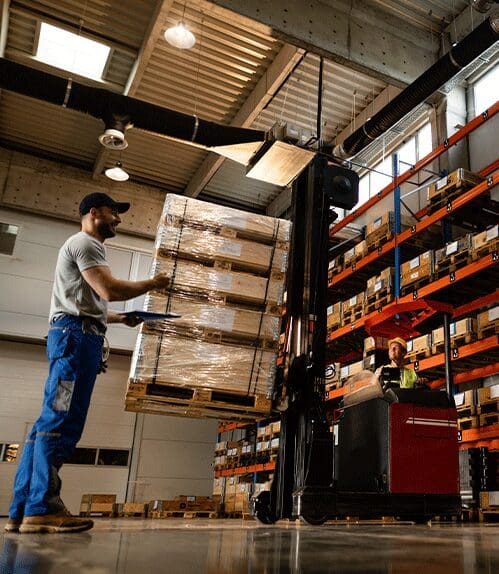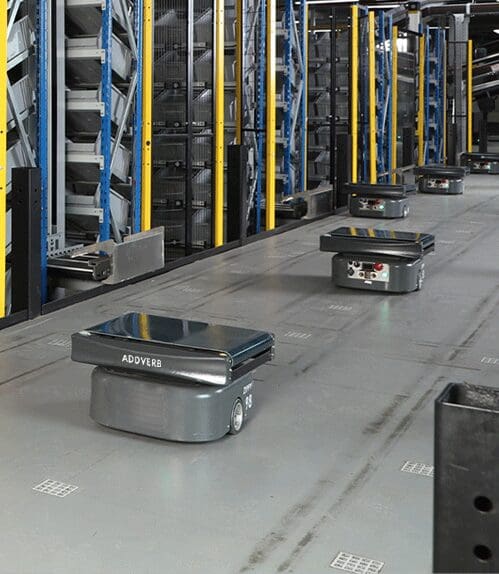Table of Contents
When it comes to manufacturing, storage, and distribution, it becomes particularly important for the warehouses to organise their operations, and investing in high-quality machines such as conveyor belts is one of them. This will make a significant contribution to effectively boosting the productivity of employees and help achieve desired results.
Conveyor Belts are one of the most vital pieces of equipment installed within warehouses that provide a range of benefits to you, your staff, and your customers. Apart from ensuring fast and safe movement of products from one place to another, they also help in sorting and eliminating the possibility of dropping heavier objects. Let us know about them in detail and find out how they can help streamline the operations in your warehouses.
What is a Conveyor Belt System?
A conveyor belt system moves varied kinds of materials, including raw materials and finished products, from one location to another. Conveyors can transport goods to the targeted location within the same floor or to distinct locations within the factory. They help alleviate material handling tasks across industries, including distribution spaces, warehouses, packaging, production, and manufacturing.
Importance of Conveyor Belts in Warehouses
Enhancing Efficiency and Productivity
Conveyor belts streamline the movement of goods within a warehouse, significantly reducing the time and labor required for manual handling. By automating the transportation process, conveyor belts allow for continuous flow, minimizing bottlenecks and accelerating throughput. This increased efficiency directly translates to higher productivity, enabling warehouses to process more orders in less time.
Improving Accuracy and Reducing Errors
Human error is an inevitable factor in manual handling, leading to misplaced items, incorrect orders, and damaged goods. Conveyor belts, when integrated with advanced sorting systems and automation technologies, ensure precise movement and placement of products. This high level of accuracy reduces the likelihood of errors, enhancing overall operational reliability and customer satisfaction.
Optimizing Space Utilization
Warehouses are constantly challenged by the need to maximize space utilization. Conveyor belts, especially those designed with modular and flexible configurations, can be adapted to fit various layouts and environments. They facilitate efficient use of vertical and horizontal space, allowing for the creation of multi-tier systems and optimizing storage capacity. This adaptability is crucial in modern warehouses where space constraints are a common issue.
| READ MORE: 15 Unique types of Conveyor Systems |
Enhancing Safety and Ergonomics
Manual handling of heavy and bulky items poses significant risks to warehouse workers, including injuries from lifting, bending, and carrying. Conveyor belts mitigate these risks by automating the movement of goods, reducing the physical strain on employees. This not only enhances workplace safety but also contributes to a healthier, more ergonomic working environment, reducing absenteeism and improving overall workforce morale.
Enabling Scalability and Flexibility
As businesses grow, their warehousing needs evolve. Conveyor belts offer the scalability and flexibility required to adapt to changing demands. Modular conveyor systems can be easily expanded or reconfigured to accommodate increased volumes, new product lines, or changes in warehouse layout. This scalability ensures that warehouses can respond swiftly to market dynamics without significant disruptions to their operations.
Integrating with Advanced Technologies
The integration of conveyor belts with advanced technologies such as automated storage and retrieval systems (ASRS), autonomous mobile robots (AMRs), and warehouse management systems (WMS) is transforming warehouse operations. These integrations enable real-time data tracking, intelligent routing, and seamless coordination between different systems. The result is a highly efficient, interconnected warehouse ecosystem that drives operational excellence and competitive advantage.
Reducing Operational Costs
While the initial investment in conveyor belt systems can be significant, the long-term cost savings are substantial. By automating repetitive and labor-intensive tasks, conveyor belts reduce the need for a large manual workforce, lowering labor costs. Additionally, the improved efficiency and accuracy lead to fewer errors, returns, and damage, further reducing operational expenses. These cost savings contribute to a more sustainable and profitable business model.
Conclusion
Conveyor belts have become a cornerstone of modern warehouse operations, offering unparalleled benefits in terms of efficiency, accuracy, safety, and scalability. Their ability to streamline the movement of goods, optimize space, and integrate with advanced technologies positions them as essential tools for any warehouse aiming to achieve operational excellence. As the demands on supply chains continue to grow, the importance of conveyor belts in warehouses will only increase, driving innovation and setting new standards in the industry.
By investing in automated warehouse robots and conveyor belt systems, warehouses can enhance their operational capabilities, meet customer expectations, and stay ahead in the competitive landscape. The future of warehousing is undoubtedly automated, and conveyor belts are at the forefront of this transformation, enabling businesses to thrive in an ever-evolving market.

FAQ
What types of conveyor belts are commonly used in warehouses?
Roller, belt, chain, and overhead conveyors are commonly used.
How do conveyor belts improve warehouse productivity?
They streamline goods movement, reduce manual handling, and speed up processing.
What are the safety considerations when using conveyor belts?
Ensure proper training, regular maintenance, emergency stops, and safety guards.
Can conveyor belts be integrated with other warehouse automation systems?
Yes, they can integrate with ASRS, sorting systems, and robotics.
What factors should be considered when choosing a conveyor belt system for a warehouse?
Consider goods type, throughput speed, warehouse layout, and budget.
How does maintenance of conveyor belts impact their efficiency?
Regular maintenance ensures smooth, efficient operation and longevity.
Are there environmental benefits to using conveyor belts in warehouses?
Yes, they save energy, reduce waste, and minimize goods damage.
Founded in 2016, Addverb offers complete robotics solutions for warehouse and industrial automation, with a strong global presence through its subsidiaries worldwide. The company provides a range of in-house automation products, including Autonomous Mobile Robots, ASRS, and sorting technologies. It serves over 350+ clients, including well-known companies such as Coca-Cola, Amazon, and DHL.





